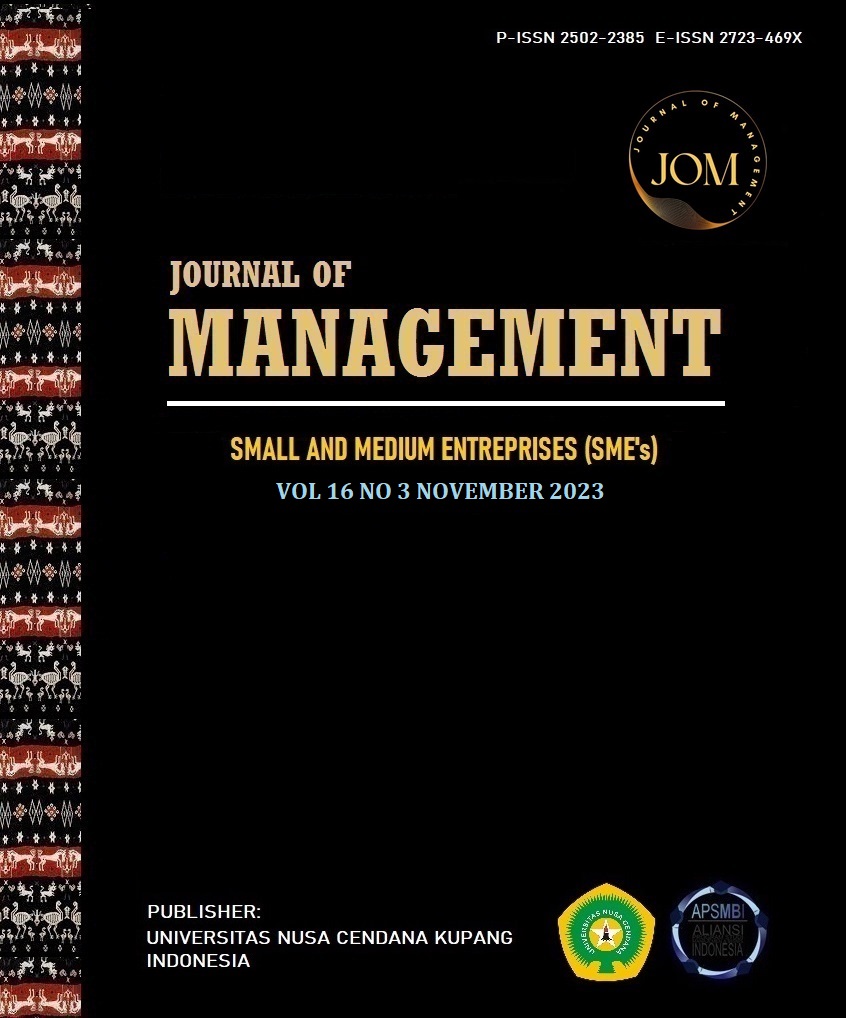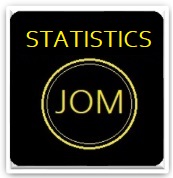ASSESSING THE INFLUENCE OF FINANCIAL INCLUSION AND DIGITAL FINANCE ON SMES PERFORMANCE: THE MODERATING ROLE OF TECHNOLOGICAL ADAPTATION
Abstract
The study's overarching goal is to shed light on the connections between technical progress, the success of Pakistani SMEs, and broadening access to financial services. The survey was administered to 212 different SMEs through an online system. Experts in various fields will be selected at random. Statistical tools such as correlation tests, reliability analyses, regression analyses, and moderation analyses will be utilized to investigate the information gathered. Having many financial options available to them increases the likelihood of success for small and medium-sized businesses (also known as SMEs). The favorable correlation between digital finance and productivity, financial inclusion, and economic development was tempered by the degree to which small and medium-sized firms were receptive to embracing new technology. Financial inclusion and digital banking are more beneficial to technologically innovative SMEs than to less adaptable rivals. This is because SMEs are the most open to using cutting-edge tools. Based on our findings, we conclude that politicians and financial institutions need to advocate for increased financial inclusion and digital banking, while small and medium-sized businesses (SMEs) should emphasize technological adaptation.
Keywords: Financial Inclusion; Digital Finance; Technological adaptation; SMEs Performance
Downloads
References
Aggarwal, S., & Klapper, L. (2013). Designing government policies to expand financial inclusion: Evidence from around the world. The Journal of Finance, 56(3), 1029-51.
Agyapong, D. (2021). Implications of the digital economy for financial institutions in Ghana: an exploratory inquiry. Transnational Corporations Review, 13(1), 51-61.
Agyekum, F. K., Reddy, K., Wallace, D., & Wellalage, N. H. (2022). Does technological inclusion promote financial inclusion among SMEs? Evidence from South-East Asian (SEA) countries. Global Finance Journal, 53, 100618.
Aker, J. C., & Mbiti, I. M. (2010). Mobile phones and economic development in Africa. Journal of economic Perspectives, 24(3), 207-232.
Allen, F., Demirguc-Kunt, A., Klapper, L., & Peria, M. S. M. (2016). The foundations of financial inclusion: Understanding ownership and use of formal accounts. Journal of financial Intermediation, 27, 1-30.
Alliance for Financial Inclusion (AFI) (2010), “Financial inclusion measurement for regulators: survey design and implementation”, available at: https://www.afiglobal.org/sites/default/files/afi_ policypaper_datameasurement_en.pdf (accessed February 2010).
Anastesia, A. C., Chijindu, E. H., & Steve, E. E. (2020). Effect of financial inclusion on entrepreneurial growth in retail and wholesale sub-sectors: Evidence from Nigeria. The Business & Management Review, 11(1), 295-304.
Arun, T., & Kamath, R. (2015). Financial inclusion: Policies and practices. IIMB Management Review, 27(4), 267-287.
Aterido, R., Beck, T., & Iacovone, L. (2013). Access to finance in Sub-Saharan Africa: is there a gender gap?. World development, 47, 102-120.
Beck, T., Demirgüç-Kunt, A., & Maksimovic, V. (2008). Financing patterns around the world: Are small firms different?. Journal of financial economics, 89(3), 467-487.
Beck, T., Demirguc-Kunt, A., & Peria, M. S. M. (2007). Reaching out: Access to and use of banking services across countries. Journal of financial economics, 85(1), 234-266.
Beck, T., Demirgüç-Kunt, A., & Singer, D. (2015). Corrigendum to ‘Is Small Beautiful? Financial Structure, Size and Access to Finance’[World Dev. 52 (2013) 19–33]. World Development, (66), 778.
Bhandari, B. S. (2018). Life insurance-social security & financial inclusion. Bimaquest, 18(2).
Bongomin, G. O. C., Ntayi, J. M., Munene, J. C., & Nabeta, I. N. (2016). Social capital: mediator of financial literacy and financial inclusion in rural Uganda. Review of International Business and Strategy, 26(2), 291-312.
Cámara, N., & Tuesta, D. (2014). Measuring financial inclusion: A muldimensional index. BBVA Research Paper, (14/26).
Center for Financial Inclusion – CFI. (2018). CFI’s vision of financial inclusion. Derived from: http://www.centerforfinancia linclusion.org/our-definition-of-financial-inclusion.
Chakravarty, S. R., & Pal, R. (2013). Financial inclusion in India: An axiomatic approach. Journal of Policy modeling, 35(5), 813-837.
Chao, X., Kou, G., Peng, Y., & Viedma, E. H. (2021). Large-scale group decision-making with non-cooperative behaviors and heterogeneous preferences: an application in financial inclusion. European Journal of Operational Research, 288(1), 271-293.
Claessens, S. (2006). Access to financial services: A review of the issues and public policy objectives. The World Bank Research Observer, 21(2), 207-240.
Cobb, J. A., Wry, T., & Zhao, E. Y. (2016). Funding financial inclusion: Institutional logics and the contextual contingency of funding for microfinance organizations. Academy of Management Journal, 59(6), 2103-2131.
Cochran, W. G. (1977). Sampling techniques. John Wiley & Sons.
Demirguc-Kunt, A., Klapper, L., Singer, D., & Ansar, S. (2018). The Global Findex Database 2017: Measuring financial inclusion and the fintech revolution. World Bank Publications.
Dev, S. M. (2006). Financial inclusion: Issues and challenges. Economic and political weekly, 4310-4313.
Ensari, M. Ş., & Karabay, M. E. (2014). What helps to make SMEs successful in global markets?. Procedia-Social and Behavioral Sciences, 150, 192-201.
Eton, M., Mwosi, F., Okello-Obura, C., Turyehebwa, A., & Uwonda, G. (2021). Financial inclusion and the growth of small medium enterprises in Uganda: empirical evidence from selected districts in Lango sub-region. Journal of Innovation and Entrepreneurship, 10, 1-23.
Frost, J., Karlan, D., & Zinman, J. (2016). Aggregate effects of microcredit: Evidence from randomized evaluations. Annual Review of Economics, 8, 83-111.
Gabor, D., & Brooks, S. (2017). The digital revolution in financial inclusion: international development in the fintech era. New political economy, 22(4), 423-436.
Goyal, A., Sengupta, R., & Singh, K. (2018). Financial inclusion and SME financing in emerging economies: Evidence from India. Emerging Markets Finance and Trade, 54(3), 639-656.
Grajales-Olarte, A., McCarthy, N., & Willems, T. (2019). Technology adoption and the investment climate: Firm-level evidence for Eastern Europe and Central Asia. Journal of Comparative Economics, 47(1), 136-159.
Harris, J., Mishra, S., & Wang, X. (2017). Does fintech aid SME growth? Empirical evidence from online lending. Journal of Financial Services Research, 51(1), 1-17.
Hatch, M. J., & Cunliffe, A. L. (2012). Organization theory: Modern, symbolic and postmodern perspectives. Oxford University Press.
Ina Ibor, B.; Offiong, A.I.; Mendie, E.S. Financial Inclusion and Performance of Micro, Small and Medium Scale Enterprises in Nigeria. Int. J. Res.–Granthaalayah 2017, 5, 104– 122.
Kamunge, M. S., Njeru, A., & Tirimba, O. I. (2014). Factors affecting the performance of small and micro enterprises in Limuru Town Market of Kiambu County, Kenya. International journal of scientific and research publications, 4(12), 1-20.
Kenny, B., & Fahy, J. (2011). Network resources and international performance of high-tech SMEs. Journal of small business and enterprise development, 18(3), 529-555.
Kim, D. W., Yu, J. S., & Hassan, M. K. (2018). Financial inclusion and economic growth in OIC countries. Research in International Business and Finance, 43, 1-14.
Konte, M., & Tetteh, G. K. (2022). Mobile money, traditional financial services and firm productivity in Africa. Small Business Economics, 1-25.
KPMG. (2019). The impact of digital finance on financial inclusion and stability in Africa. KPMG International Cooperative.
Kulathunga, K. M. M. C. B., Ye, J., Sharma, S., & Weerathunga, P. R. (2020). How does technological and financial literacy influence SME performance: Mediating role of ERM practices. Information, 11(6), 297.
Marshall, J. N. (2004). Financial institutions in disadvantaged areas: a comparative analysis of policies encouraging financial inclusion in Britain and the United States. Environment and Planning A, 36(2), 241-261.
Mohiuddin, S. (2015). Private Sector Leadership in Financial Inclusion. Corporate Citizenship Center, US Chamber of Commerce Foundation.
Muthinja, M. M., & Ndemo, B. (2020). Financial inclusion and SMEs growth: The role of digital technologies. Journal of Small Business & Entrepreneurship, 32(3), 211-226.
Nandru, P., & Rentala, S. (2019). Demand-side analysis of measuring financial inclusion: Impact on socio-economic status of primitive tribal groups (PTGs) in India. International Journal of Development Issues, 19(1), 1-24.
Nistor, G. C. (2019). An extended technology acceptance model for marketing strategies in social media. Rev. Econ. Bus. Stud, 12, 127-136.
Nkwede, F. (2015). Financial inclusion and economic growth in Africa: Insight from Nigeria. European Journal of Business and Management, 7(35), 71-80.
Ocloo, C. E., Akaba, S., & Worwui-Brown, D. K. (2014). Globalization and competitiveness: Challenges of small and medium enterprises (SMEs) in Accra, Ghana.
Ombi, N., Ambad, S. N. A., & Bujang, I. (2018). The effect of business development services on small medium enterprises (SMEs) performance. International Journal of Academic Research in Business and Social Sciences, 8(3), 117-130.
Ozili, P. K. (2018). Impact of digital finance on financial inclusion and stability. Borsa Istanbul Review, 18(4), 329-340.
Rahman, M. M. (2015). SMEs and networking: A resource-based view perspective. Entrepreneurship, Micro-Multinationals, and International New Ventures.
Sahay, M. R., Cihak, M., N'Diaye, M. P., Barajas, M. A., Mitra, M. S., Kyobe, M. A., ... & Yousefi, M. R. (2015). Financial inclusion: can it meet multiple macroeconomic goals?. International Monetary Fund.
Salathia, P. (2014), Impact of Financial Inclusion on Economic Development, Ph.D. Thesis from University of Jammu, available at: http://hdl.handle.net/10603/80438.
Sarma, M. (2008). Index of financial inclusion (Working Paper No. 215). Indian Council for Research on International Economics Relations.
Sharma, D. (2016). Nexus between financial inclusion and economic growth: Evidence from the emerging Indian economy. Journal of financial economic policy, 8(1), 13-36.
Siddik, M. N., Sun, G., Kabira, S., Shanmugan, J. & Yanjuan, C. (2016). Impacts of e-banking on performance of banks in a developing economy: empirical evidence from Bangladesh. Journal of Business Economics and Management, 17(6), 1066–1080. 10.3846/16111699. 2015.1068219.
Simiyu, C. N., & Oloko, M. (2015). Mobile money transfer and the growth of small and medium sized enterprises in Kenya: A case of Kisumu city, Kenya. International Journal of Economics, Commerce and Management, 3(5), 1056-1065.
Tetteh, E. N., Lawer, E. A., & Asare, Y. (2021). The moderating role of technological adaptation on the relationship between financial inclusion, digital finance and SMEs performance: evidence from Ghana. African Journal of Economic and Management Studies.
Thathsarani, U. S., & Jianguo, W. (2022). Do Digital Finance and the Technology Acceptance Model Strengthen Financial Inclusion and SME Performance?. Information, 13(8), 390.
Turkmen, S. Y., & Yigit, I. (2012). Diversification in banking and its effect on banks’ performance: Evidence from Turkey. American international journal of contemporary research, 2(12), 111-119.
Turyakira, P., & Mbidde, C. I. (2015). Networking for SMES in Uganda: A conceptual paper. African Journal of Business Management, 9(2), 43.
Williams, H. T. (2017). Role of financial inclusion in economic growth and poverty reduction in a developing economy.
World Bank (2018), “Doing Business 2018, reforming to create job,” A World Bank Group Flagship Report.
World Bank. (2014). Global Findex database 2014: Measuring financial inclusion around the world. World Bank Group.
World Bank. (2021). World Bank SME Finance: Development News, Research, Data.
Yang, L., & Zhang, Y. (2020). Digital financial inclusion and sustainable growth of small and micro enterprises—evidence based on China’s new third board market listed companies. Sustainability, 12(9), 3733.
Yorulmaz, R. (2013). Construction of a regional financial inclusion index in Turkey. BDDK Bankacılık ve Finansal Piyasalar Dergisi, 7(1), 79-101.

 Muhammad Zulqarnain(1*)
Muhammad Zulqarnain(1*)



